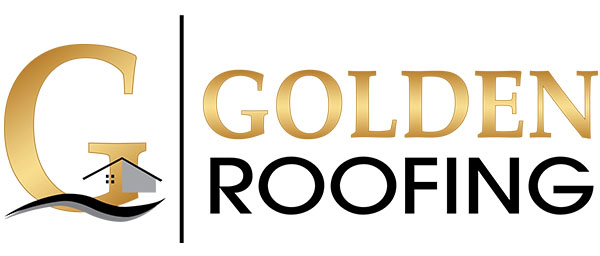When installing a new roof, it’s important to be familiar with common terminology of roofing materials, roofing structures, parts of a roof, and other key roofing terms. When you’re unfamiliar with what’s being done to your home, it can lead to bad roofing contractors taking advantage of you or taking bad advice. Unfortunately, some roofing contractors will try to cut corners and costs, costing you more time and money along the way.
If you want to replace your commercial or residential roof, call the experts at Golden Roofing. We’ve been installing roofs for homeowners, property managers, contractors, and more, so no job is too big or small.
To schedule a roofing estimate with one of our Monroe roofers, call us today at 318-348-5396.
What are the Most Important Parts of a Roof Structure?
Below, our roofing experts break down the most important roofing terms and the parts of a roof you’ll need to know when installing an entire roofing system.
Roof Decking or Roof Sheathing
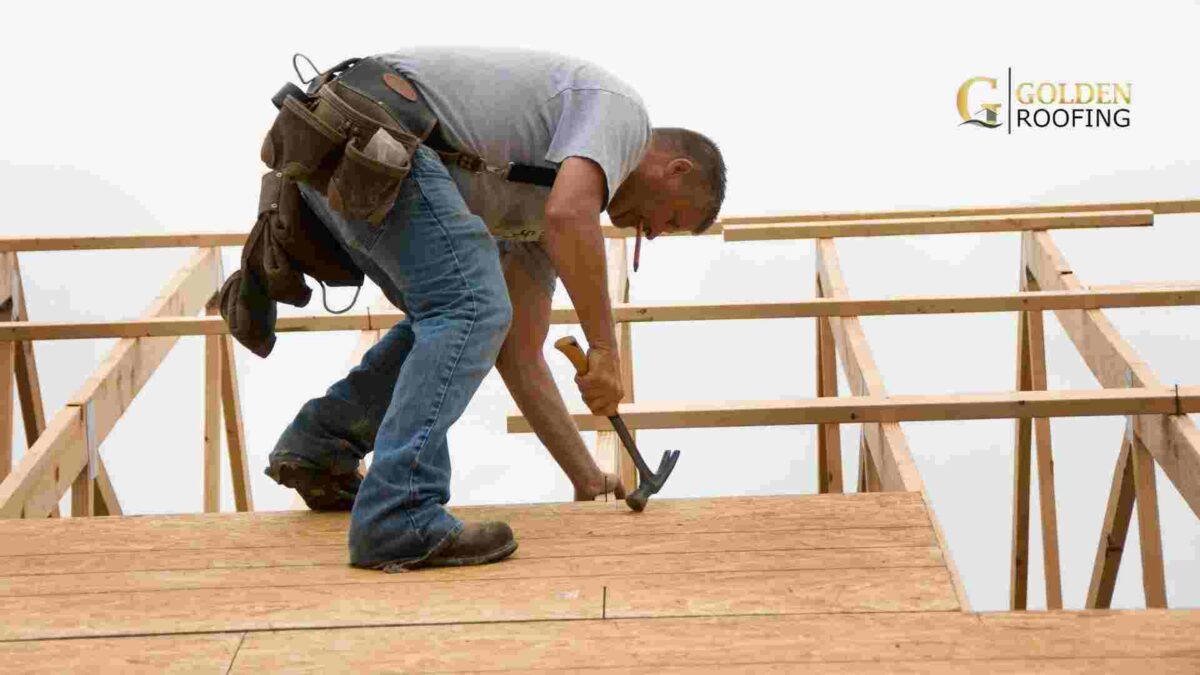
The roof decking, or roof sheathing, is the wooden boards (planks or plywood) that make up the foundation of your roof system. They’re placed right over the roof trusses.
When the roof deck becomes rotted, it can’t support the roof covering materials on top of it. Unfortunately, you won’t know when the roof decking has become compromised until you tear off your existing roof components.
Drip Edge
The drip edge plays a crucial role in your roofing system. This roof component keeps water from getting under roofing components.
The roof’s drip edge is installed at the eaves and rakes to prevent water from getting to the fascia and roof decking. A roofing system installed without a drip edge will make passing a Monroe roofing inspection almost impossible, so working with experienced roofing contractors is important.
We dive more into drip edges here: Gutter Apron vs Drip Edge
Ice and Water Shield

The ice and water shield is a roof covering that helps to prevent roof leaks in heavy rain and protects your roof from direct water and ice.
If you don’t install waterproofing material on a home when the water seeps under the top layer of roofing, various materials, such as shingles, will start to break down much sooner than necessary. The waterproofing material acts as a protective barrier for the roof decking.
The ice and water shield is crucial around valley flashing, penetrations, and pitches.
Roof Underlayment
The roof underlayment is roofing material, usually made of felt or other synthetic material, installed between the roof decking and shingles. Roofing underlayment provides another layer of defense against water infiltration damaging the roof’s decking.
Starter Shingles
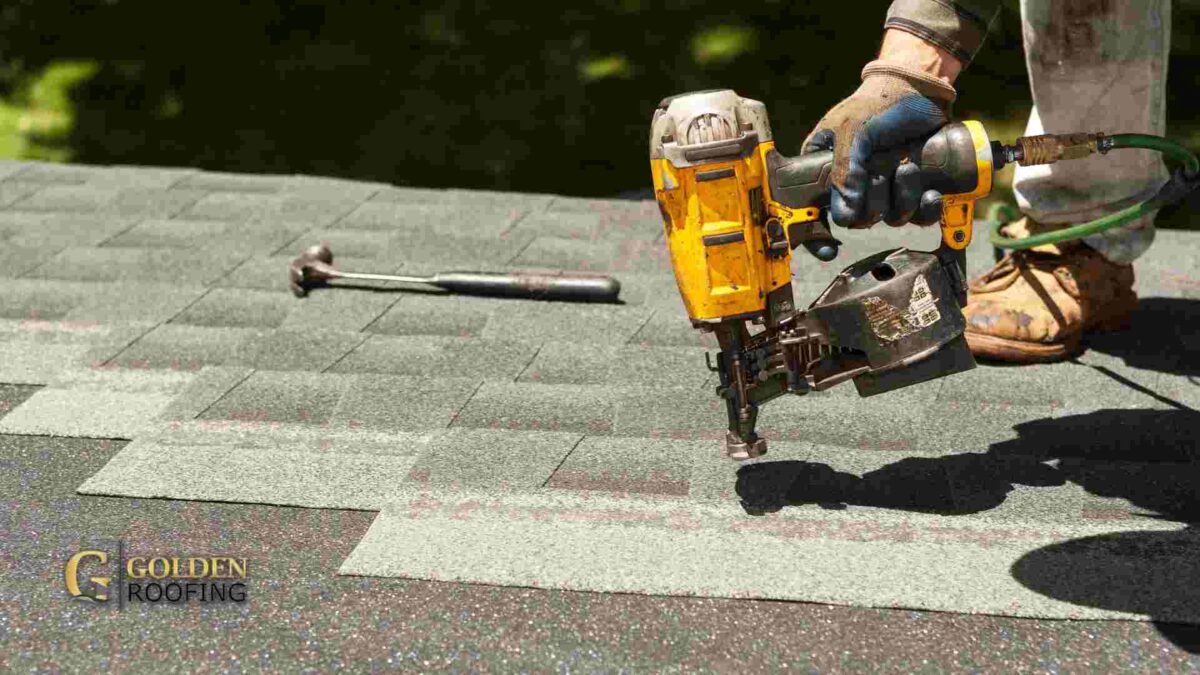
Starter shingles are a pre-cut roofing component underneath the roof’s final layer of shingles.
Starter shingles are made of an adhesive material that adheres the shingles to the eaves and rakes to protect the roofing system from the elements.
For example, without starter shingles, a large gust of wind could easily get under the shingles on the roof edge and blow them off your roof frame.
Best Residential Top-Layer Roofing Materials
When choosing your roof’s shingles, it’s essential to consider more than just what will look best with your home. These materials will also determine the amount of roofing maintenance you’ll need.
Asphalt Shingles
When most homeowners consider their next roofing project, this type of shingle is typically the first that comes to mind. They’re durable, require minimal maintenance, and are the most affordable roofing option.
Asphalt shingles are available in a variety of colors, shapes, and sizes. The most popular types include strip shingles, luxury shingles, and dimensional shingles.
Metal Roofing
If you’re considering another type of roofing material, metal roofing is an option to consider.
Metal roofs last much longer than asphalt shingles. In fact, a metal roof can last up to 70 years. This type of roofing is also more energy-efficient and environmentally friendly. However, they are noisy during heavy storms, can be dented easily, and are very expensive.
There are several types of metal roofing options, so here is a breakdown of the types of metal used for roofing:
- galvanized steel
- stainless steel
- aluminum
- zinc
- copper
Each metal has its own pros and cons, as well. So, if you’re considering a metal roof, you’ll want to discuss your options with a professional roofing contractor.
TPO
TPO, thermoplastic polyolefin, is a single-ply roofing sheath that is becoming a popular roofing choice for commercial roof installations in Monroe. TPO has been gaining popularity in the commercial industry due to its naturally reflective surface that reflects UV rays.
In addition to businesses, homeowners have been taking advantage of TPO’s benefits. If you have a low roof slope or flat roof, TPO can be an excellent roofing material option because it keeps the room below it cooler.
Cedar Shake
Cedar shake is roof tiles made from cedar trees that function like asphalt or metal roofs.
To create cedar shake shingles, the cedar tree is cut into 2-foot sections and either hand-split or sawed into a tapered thickness. A hand-split shingle will have a more rugged look versus the tapered one, which is smoother.
There are three grades of cedar shake shingles:
- Common is the cheapest and does not last very long
- Selected is the middle and is mixed with the other two grades
- 100% straight grain is the best type of cedar shake shingles
If you’re set on cedar shake roofing, we recommend going with the 100% straight grain, as it will last the longest of the three.
Best Commercial Top-Lawyer Roofing Materials
In addition to TPO, asphalt, and metal roofing, commercial roofing has some additional options well-suited for their more complex needs:
EPDM
Ethylene propylene diene monomer is more commonly known as rubber roofing. It’s an inexpensive material that is relatively easy to install.
An EPDM roof can last a business up to 20 years.
There are some cons to installing an EPDM roof. For starters, while the black material absorbs the heat, it’s not aesthetically pleasing. It is also easily damaged, so a hail storm or fallen tree branch can easily puncture the material and cause significant problems if not fixed.
Our Monroe hail damage roof repair contractors can help if your EPDM roof has been damaged by hail.
PVC
Polyvinyl chloride roofing is made of two layers of PVC with additional additives that reinforce the material and make it flexible and UV stable.
PVC roofing is a great option for a flat roof or sloping roof. It’s also resistant to fire, wind, chemicals, and moisture.
Since the installation involves heat welding, it creates a more permanent bond between the seams.
The few negatives with a PVC roof are that it’s a more expensive roofing option. Over time, the PVC material will shrink, which can lead to leaks. Once a PVC roof has been damaged, it’s difficult to fix and usually requires a complete roofing replacement.
SPF
Spray polyurethane foam, or SPF, is made from plastic that changes from a liquid to a solid while expanding to about 30 times its original size during the drying time. SPF is an energy-saving option that will pay for itself over time.
Typically, a maintained SPF roof can last 40 years or more.
Since the material expands, it can easily cover any gaps in the roof to prevent leaks. Unfortunately, if the SPF is not applied correctly, it can shorten its lifespan. Also, an SPF roof can be expensive and difficult to remove.
Roof Flashing
Most roofing contractors have metal flashing installed at the same time as your shingles.
This roofing component is made of a thin metal, either aluminum, steel, or copper, and directs the flow of water away from certain areas, such as chimney flashing around the chimney and additional metal flashing around valleys.
Regardless of the type of metal used for the roof flashing, it should last longer than your actual roof. Inspecting both the roof flashing and chimney flashing is important to ensure it works properly to prevent water leaks.
Ridge Capping
Ridge capping is the layer of shingles installed where the slopes of the roof meet. The shingles used for ridge capping are usually thicker and pre-bent to easily form the roof’s ridge.
If your roofer tries to cut costs on the type of shingles used for ridge capping, you run the risk of developing a roofing leak.
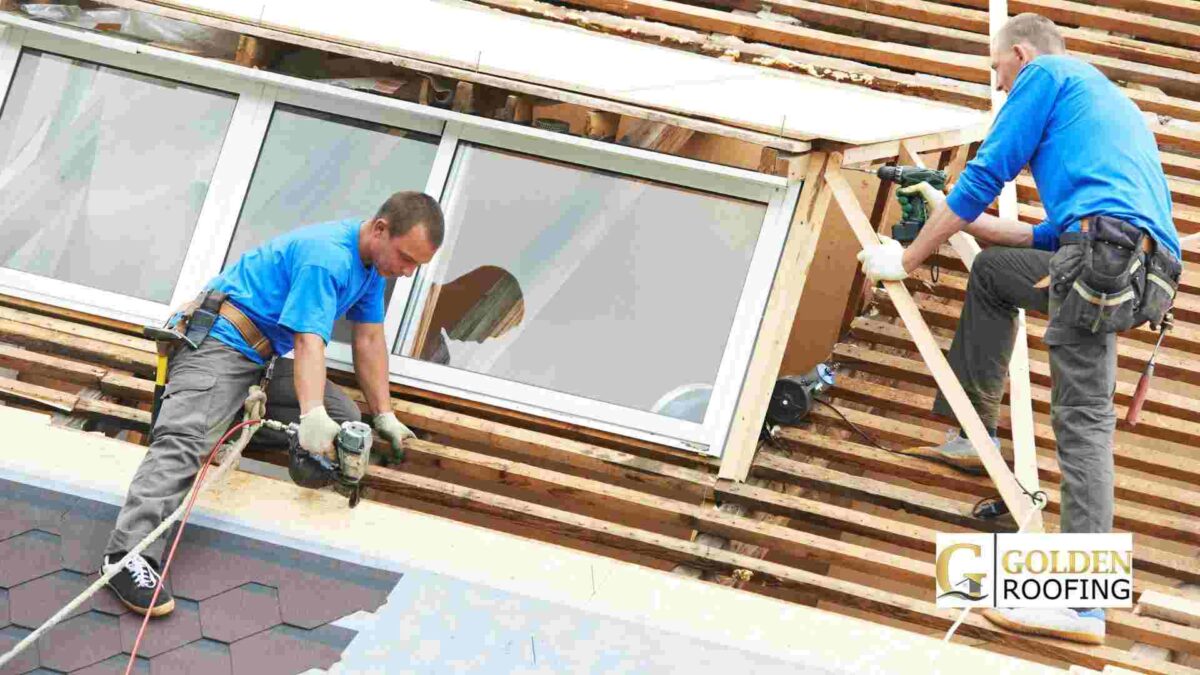
Roof Vents and Ridge Vents
Roof vents allow the humid air in the attic and home a way to escape. Proper ventilation is key to prolonging your roof’s lifespan. The hot and cold air from your attic and home cannot escape without these vent openings.
There are two types of roof or ridge vent systems to choose from:
- Active ventilation systems circulate air with the use of mechanical fans. With this type of system, you can choose from power vents, turbine vents, solar-powered vents, or vents with a baffle.
- Passive ventilation systems rely on natural air currents for ventilation. With this type of system, you can choose from gable-end vents, static vents (box vents), or ridge vents without a baffle.
Other Important Roof Terms
Above, we’ve covered the main elements that make up the major parts of a roof. Listed below are more terms that can help you understand the process of installing your new roof.
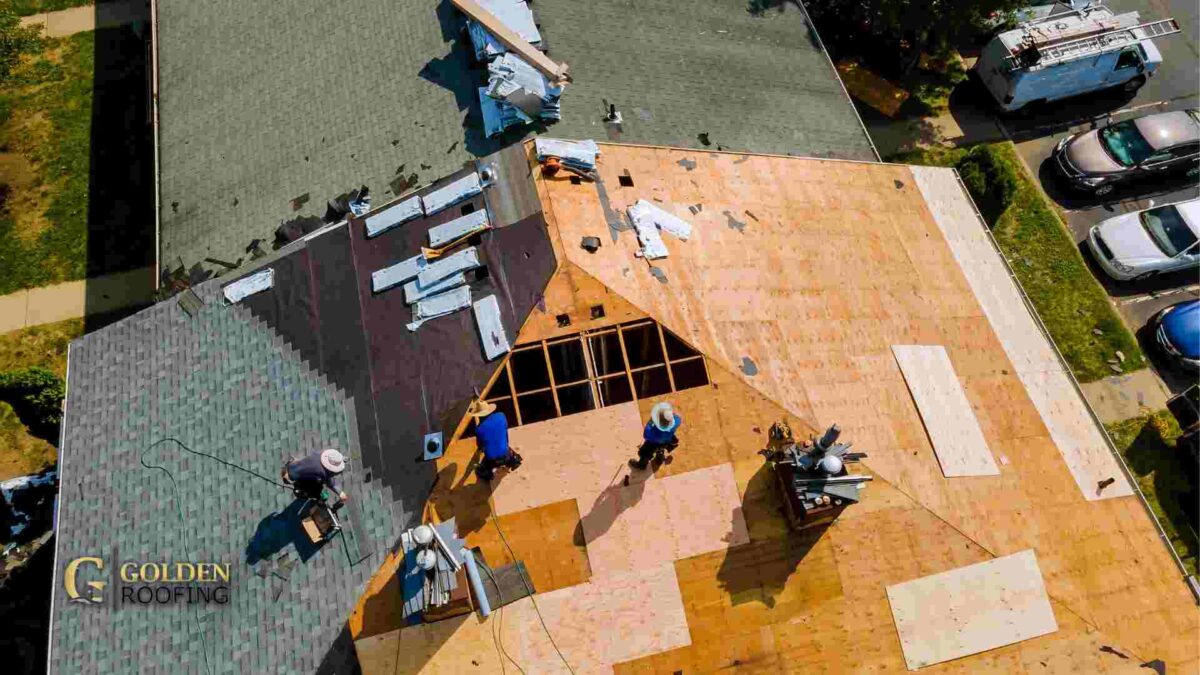
Rakes and Eaves
The rakes and eaves are roof components that run along the roof’s edge. Eaves are part of the roof edges that overhang, like the rain gutter line. Rakes are sloped sections of the top that run from the eaves to the peak.
Roof Facets
Roof facets are different sides or sections of a roof. A more complex roof will have more roof facets.
Roof Valleys and Hips
A roof valley is part of the roof where two facets of the roof meet, forming an interior angle. The slope created by roofing valleys allows water to run off.
A roof hip is the area of the roof where two facets meet at a slope to create an exterior angle.
Gable Roof
The gable is a triangular area under which two facets overhang.
This part of the roof got its name from the gable end vent that is usually installed under this portion of the roof.
Fascia
The fascia is a long board that runs below the rakes and eaves of the roofline. The fascia is a decorative area but serves a practical purpose as the area where the gutters are attached.
Soffit
The soffit is the material that covers the area under the roof’s fascia. When standing under the roof, you can look up and see the soffit. Wood, fiber cement, aluminum, and vinyl are the most popular materials used for the soffit.
These materials play a major role in determining the average soffit replacement cost.
Dormer Windows
These windows extend out of a sloped roof.
Dormers often look like small rooms with their own roof. A dormer window can sometimes be on the smaller side and only hold one window or longer, having multiple windows.
These give homes character while allowing for lots of natural light for homeowners.
Call Golden Roofing for Monroe Roof Replacement Services
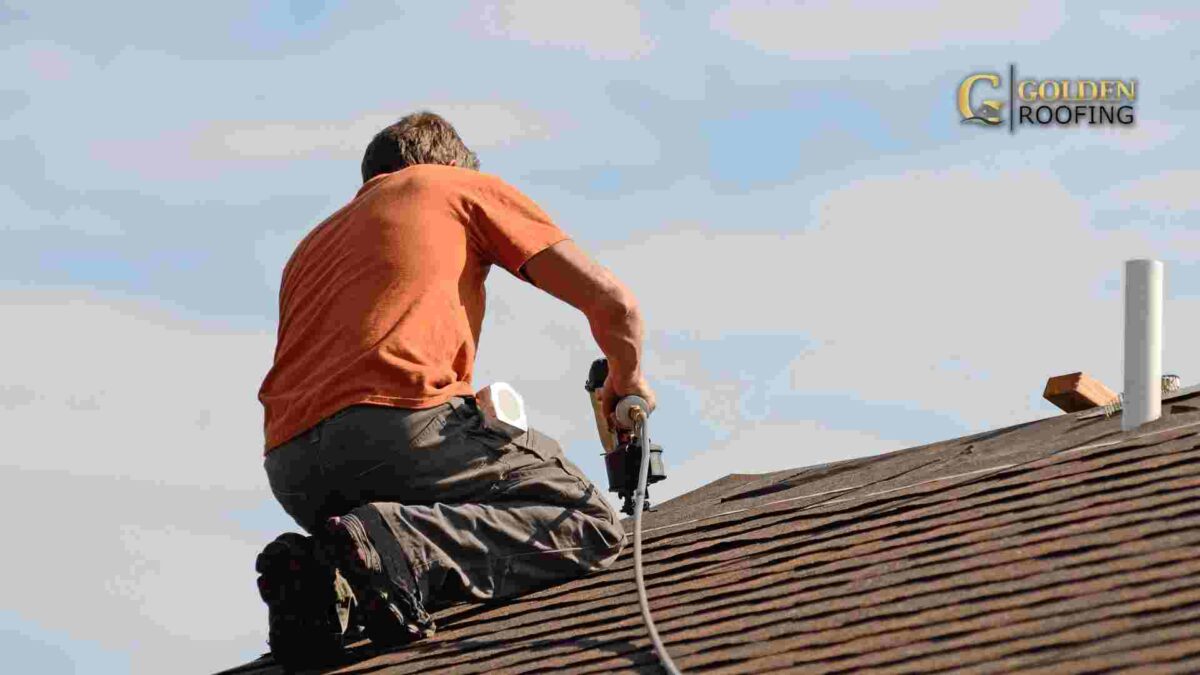
At Golden Roofing, we’ve been serving the Shreveport-Monroe area for over 30 years. We enjoy providing high-quality roofing services as well as providing roofing education to homeowners in Monroe and the surrounding areas.
When it’s time for a new roof for your home or business, you can trust Golden Roofing to provide quality service throughout the entire roofing installation. Call the roofing experts today at 318-348-5396.
